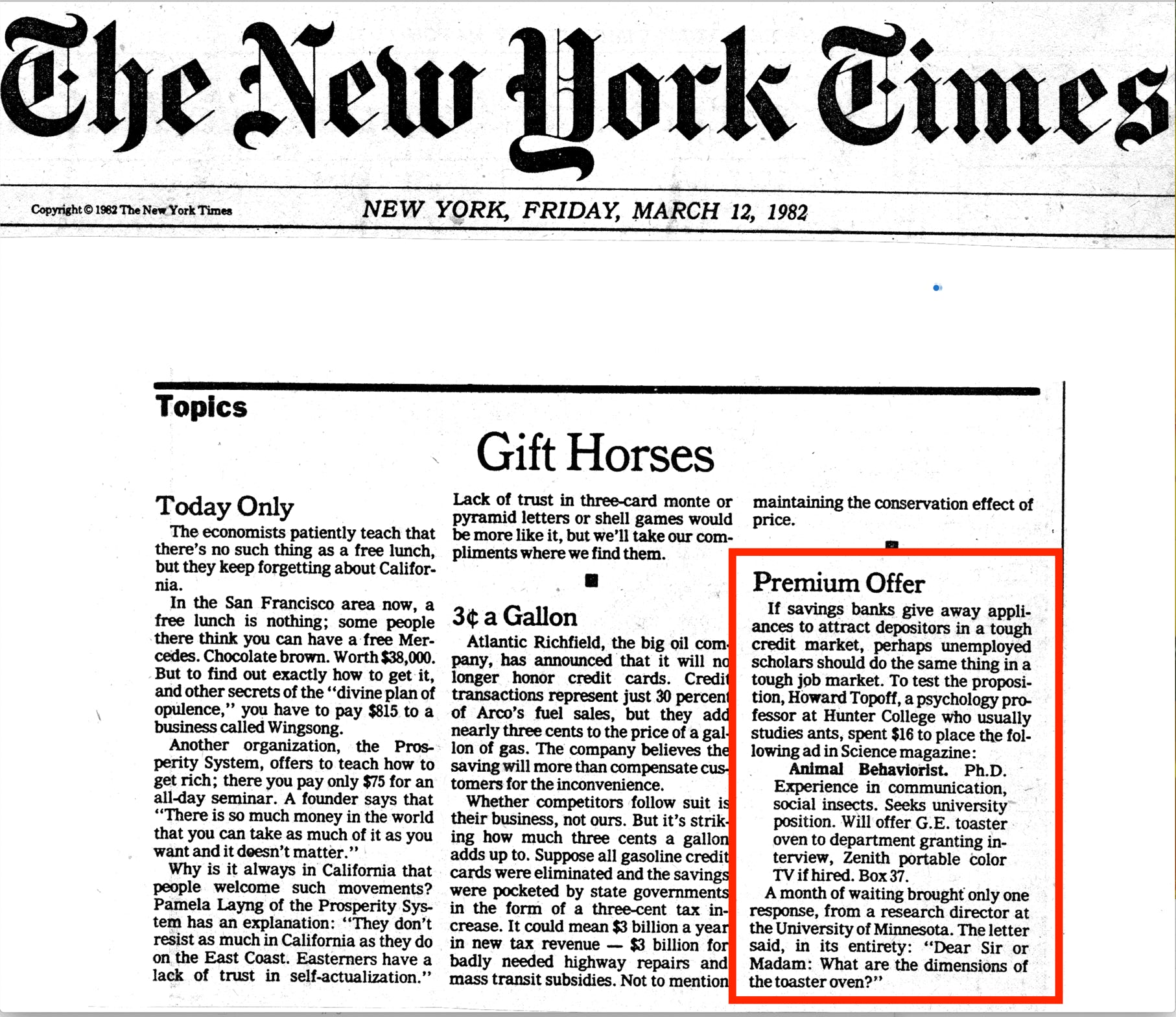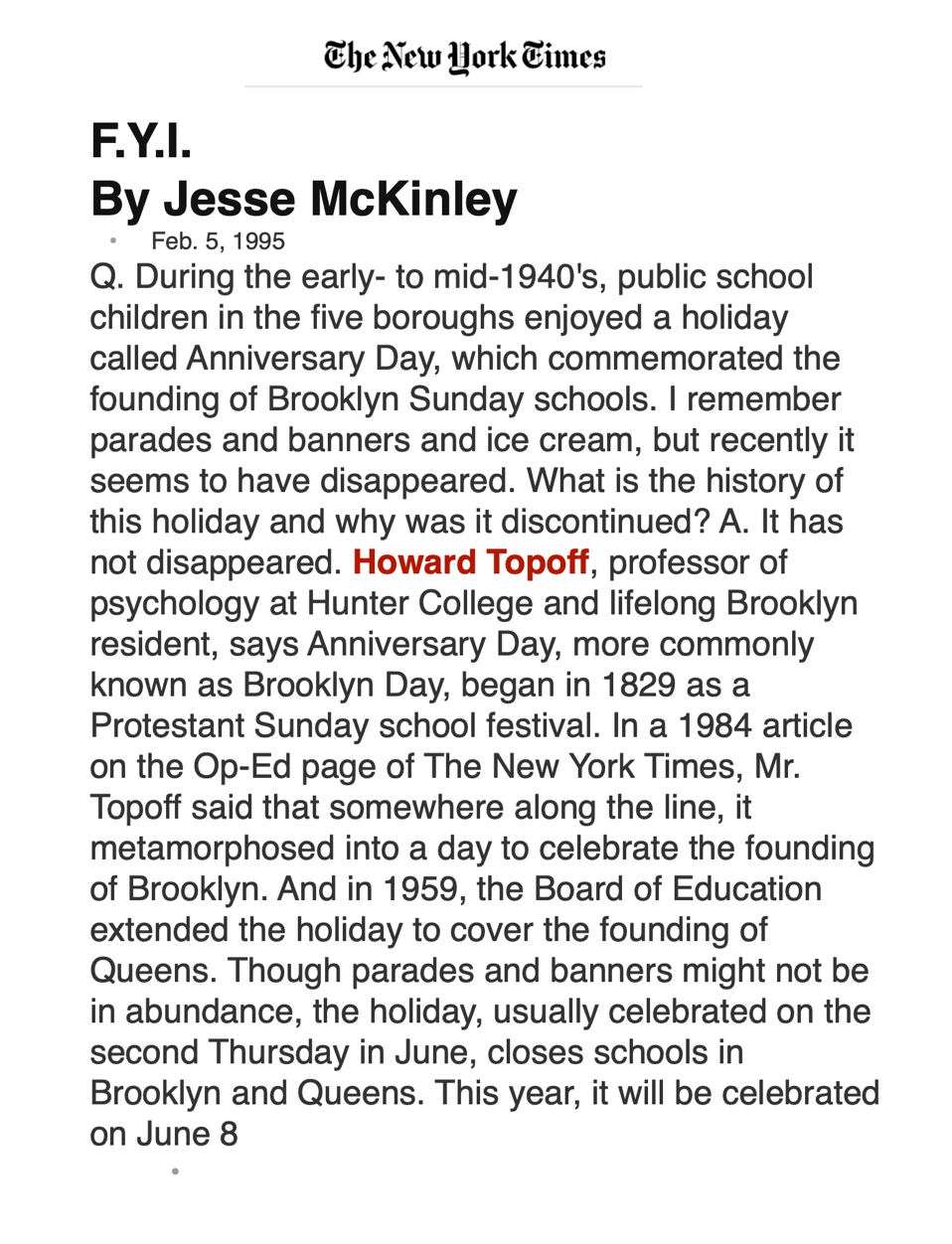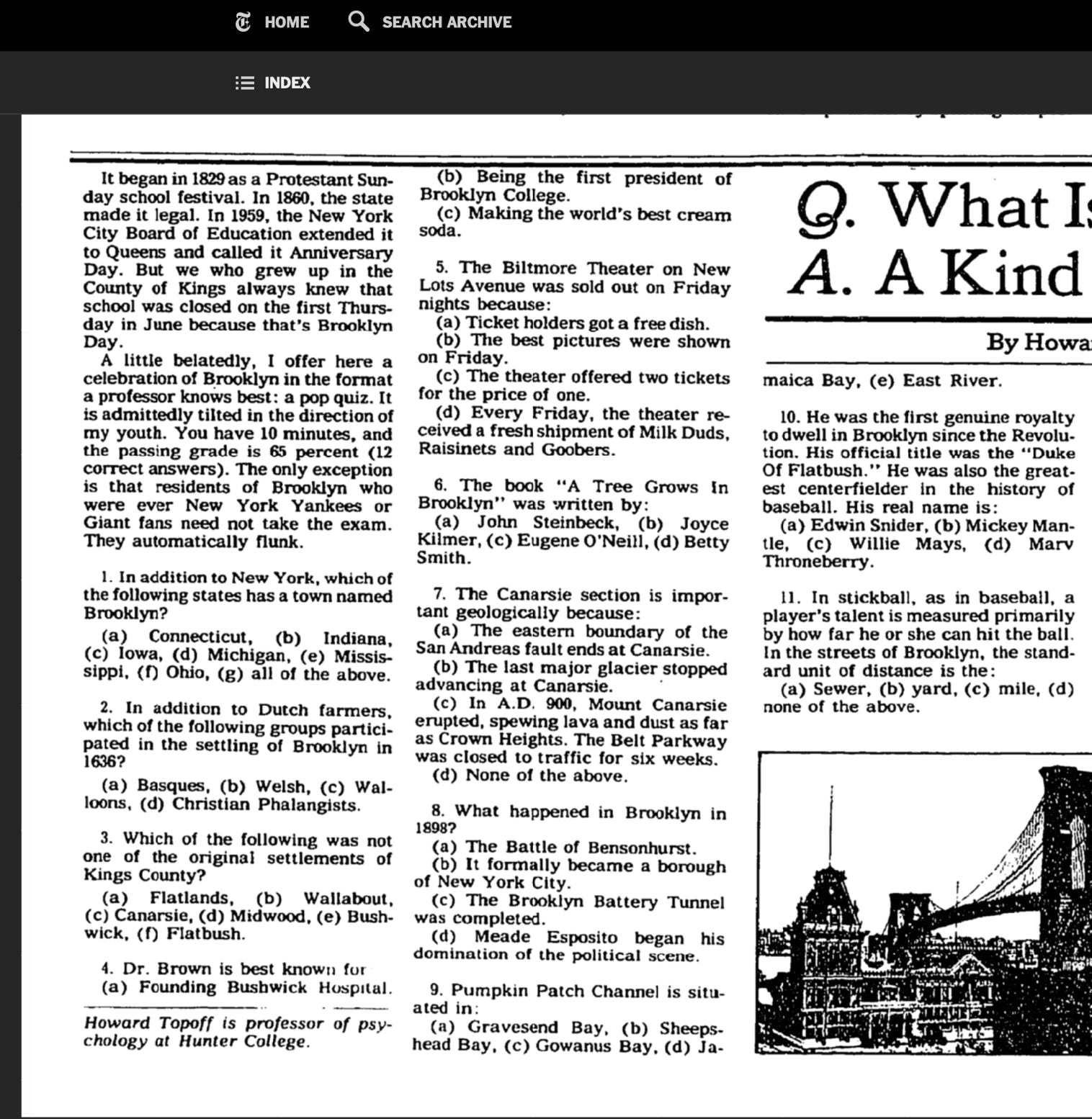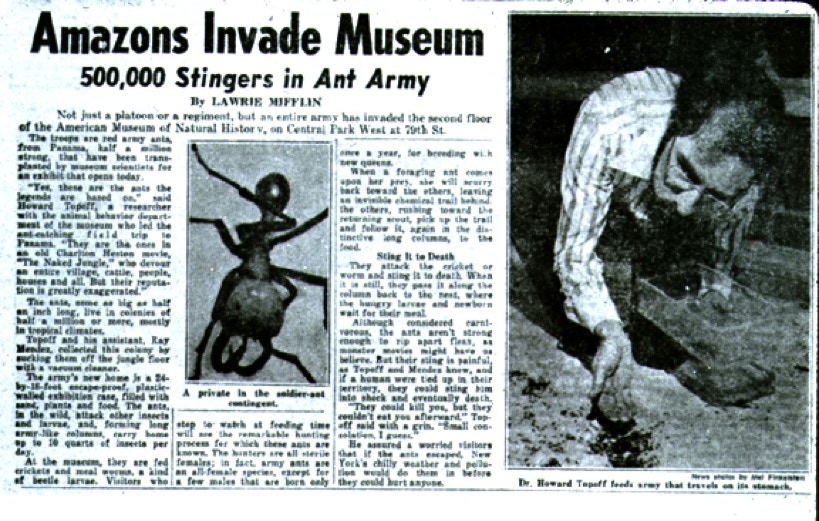Portal, AZ - Rodeo, NM
Serving The Communities Of Portal and Rodeo (www.portal-rodeo.com)
Serving The Communities Of Portal and Rodeo (www.portal-rodeo.com)

Coverage By The New York Times






Vacuuming Up Army Ant Colony


The New York Times Archives
October 1, 1974,
When Howard R. Topoff flew to Panama recently, he took along a 50-pound generator hooked to a household vacuum cleaner. After 10 days of sweeping, Mr. Topoff and his assistant, Raymond Mendez, returned last week from the tropics with their mission accomplished: The half million army ants they vacuumed up are now on view at the American Museum of Natural History. Mr. Topoff, one of the country's leading specialists in the study of
army ants and a research fellow at the museum, hopes the exhibit will introduce the public to this particular species of ant that some naturalists affectionately refer to as the “Huns and Tartars of the insect world.”
“It's the classical picnic idea,” said Mr. Topoff. “Most people think of ants as annoyances, but they are one of the most complex societies ever to evolve among the invertebrates.”
Descendants of the wasp, there are some 13,000 known species of ants in the world today, Mr. Topoff estimates. They live in colonies and, although Mr. Topoff does not suggest these to be exact microcosms of the human world, he does believe much about the evolution of social behavior can be learned by studying the colonies.
Army ants, Mr. Topoff's focus of study for the past 10 years, are rust in color and range in length from one-quarter to threequarters of an inch. There are some 300 different species of army ants, and Mr. Topoff says he is particularly fascinated by them because they are “a bit unusual.” Common to the tropics and some of the more temperate climates of the United States, army ants travel in huge colonies of one million or more (a colony consumes eight quarts of food daily) and are nomadic, sometimes traveling the length of two football fields in an evening. They communicate with each other by excreting a variety of chemicals, and they derive their name from the fact, as Mr. Topoff explained, that they “remind people of a human army with
all the metaphors thrown in.” A single queen lays all the eggs for the colony, which can increase itself by one million every three weeks. The rest of the workers in
the colony are known as soldiers and their nests, which they form with their own bodies, are called bivouacs.
Although army ants have strong jaws with a potent sting that enables them to kill prey much larger than themselves, Mr. Topoff said they posed no danger to people “short of going to sleep in the midst of them.”
In fact, Mr. Topoff takes offense at the image of army ants as “warlike, aggressive animals.” “When army ants form into their long columns,” Mr. Topoff said,
“they are obviously out to get food, an action that can be termed no more aggressive than humans sitting down and eating steak.” Since army ants are not ideal laboratory animals, Mr. Topoff, who is an associate professor of psychology at Hunter College, spends his summers in Jericho, Ariz., where the museum has a field research station. “When it comes to insects,” said the 33-year-old researcher, “people assume everything is instinctive, but that just isn't so. The army ant seems to undergo a week of socialization, which is obviously
not as extensive or complex as the period of puberty for humans, but without that week of socialization, the army ant is not able to function as an adult.”
Mr. Topoff, who studied at the museum under the late T. C. Schneirla, a pioneer in army ant research, devised the method of a household vacuum cleaner powered by a generator as the easiest method for scooping up colony of army ants. The ants were filtered into porous bags, put in crates and then, with the approval of the Department of Agriculture, flown from Panama to New York.
At the museum, the colony is being kept in a 30-by-20-foot plexiglass case filled with white sand and tropical plants and is being fed crickets and worms by the thousands.
The exhibit, which is probably the first of its kind this side of the Ozarks, opens today. Although some ants can live as long as 20 years, Mr. Topoff said he would be happy if the army ants survived for two months in the artificial environment.

Museum's Army Ants Succumb to the Cold
Oct. 24, 1974
“Too much cold weather,” according to the American Museum of Natural History, has diminished the colony of army ants it had flown up earlier this month from Panama for exhibition.
Dr. Howard Topoff, who collected the original colony of some half
million, said the ants were accustomed to temperatures of at least 85 degrees and that the museum had been too cold for them even when a heating coil was placed beneath the sand in their Plexiglas container.
The colony, which still numbers several thousand ants collected on a second expedition to Panama by Dr. Topoff's assistant, Raymond Mendez, will be on view until Tuesday. Dr. Topoff said the exhibit had proved one of the museum's most popular.